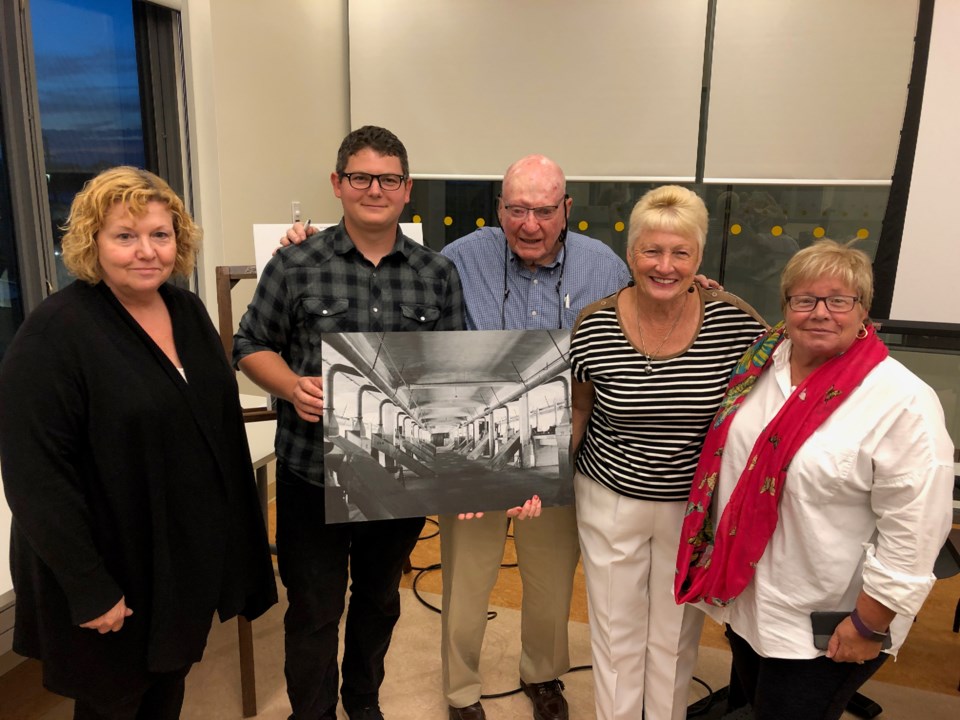The Collingwood Terminals are “monolithic, a monument … the last remaining icon of the town’s shipyard history.”
Those were the descriptions used in a resident-led meeting about the 90-year-old structure on Collingwood’s waterfront.
Last night (Sept. 25), the group of residents behind a petition to save the Collingwood grain terminals hosted an information meeting to share their ideas regarding the future of the terminals building and offer some expert opinions.
About 100 residents attended the meeting at the Collingwood Public Library community rooms.
Bing Jowett, one of the meeting organizers, opened the meeting stating he and the group formed around him wants to see the town replace the roof membrane, board up the windows, and fix the lights as soon as possible as a start to the preservation work.
Andrew Winters completed his Masters in Architecture thesis on obsolete industrial architecture, with a case study on the Collingwood Terminals. For his research, Winters toured the building and brought prints of his black and white photos to display at the meeting.
Winters said the Collingwood building is “very dynamic,” and explained each level of the building and the types of machinery included.
“It’s a concrete shell to hold a machine for sorting and holding grain,” said Winters. “That makes it difficult to adapt for re-use.”
He provided examples of other grain elevator buildings being adapted for re-use, from condo developments, museums, displays for art or light shows, and an indoor climbing facility.
Ultimately, his suggestion was “minimal intervention.”
He recommended the building be cleaned up to a state where members of the public could go inside.
“Preserve it as a museum itself, with all the machinery still inside,” he said, finishing with a quote from a professor of architecture on grain elevators that still stand on the shores of Canada and the US.
“One could argue their use is that they just stand there and remind us,” read Winters.
The meeting also included a presentation from a structural engineer who reviewed an engineering report commissioned by the town on the state of the terminals building.
He said deterioration would accelerate if someone didn’t do something soon.
“It’s a solid structure to start with, but it needs a little help,” he said.
Rick Lex, a local representative of the Architecture Conservancy of Ontario, said the pressure shouldn’t be on the group to find an end-use for the building, and encouraged the group to keep pushing for preservation.
“In my mind, it has a use as a monument to the past,” said Lex.
Glenna Kennedy, one of the volunteers who helped Bing Jowett organize the meeting last night, called the preservation group a “determined” bunch.
For now, Kennedy said the group is waiting on council to determine what they’re going to do next. In the meantime, they’re spreading the word about the petition to save the terminals, which has more than 3,500 signatures.
“We want to keep the public interest up,” she said. “We’re just a bunch of like-minded individuals, and right now it’s just a continuation of what we’re doing.”
Currently, council is waiting for a staff report on options for the terminals building, and also for the results of a public survey asking for input on how to spend the approximately $18 million the town received from the sale of Collus and the Collingwood Regional Airport this year.



